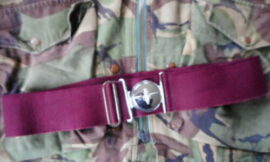The M16 is one of the most iconic and widely used military rifles in the world. Adopted by the United States military in the 1960s, the M16 has gone through numerous iterations and improvements, becoming a staple in military arsenals globally. Known for its accuracy, modularity, and adaptability, the M16 has seen extensive use in various conflicts, establishing a significant legacy in modern warfare.
Historical Background
The development of the M16 began in the late 1950s, following the need for a more lightweight and versatile rifle to replace the M14. The U.S. military sought a weapon that could offer high rates of fire with reduced recoil, suitable for jungle warfare and close-quarters combat, which were prominent in the Vietnam War.
Eugene Stoner, a prominent firearms designer at ArmaLite, created the AR-10, a 7.62×51mm NATO rifle. The AR-10 was then scaled down to accommodate the smaller 5.56×45mm NATO cartridge, resulting in the AR-15. Recognizing the potential of the AR-15, Colt’s Manufacturing Company acquired the rights to the design in 1959 and began marketing it to the military. After extensive testing and modifications, the rifle was adopted by the U.S. military as the M16 in 1964.
Design and Features
The M16 is a gas-operated, air-cooled, magazine-fed, selective-fire rifle. It is renowned for several key design features:
- Direct Impingement Gas System: The M16 uses a direct impingement gas system, where gas from the fired cartridge is diverted from the barrel to the bolt carrier, cycling the action. This system contributes to the rifle’s lightweight design and high rate of fire.
- Modularity: The M16 is highly modular, with a Picatinny rail system on later models that allows for the attachment of various accessories, such as optics, lights, lasers, and grips. This modularity enables soldiers to customize the rifle for different missions and preferences.
- Lightweight Construction: Made primarily of aluminum and polymer materials, the M16 is much lighter than its predecessors. This makes it easier to carry and handle, especially in prolonged engagements or harsh environments.
- Accuracy: The M16 is known for its accuracy, thanks to its high-velocity 5.56×45mm NATO cartridge and flat trajectory. The rifle’s long sight radius and consistent trigger pull also contribute to its precision.
- Selective Fire: The M16 features a selector switch that allows for semi-automatic and fully automatic fire. Later models, such as the M16A2, introduced a three-round burst mode to conserve ammunition and increase accuracy in automatic fire.
Variants
The M16 has seen several iterations and improvements over the decades, each addressing various operational needs and incorporating technological advancements:
- M16A1: The original model issued during the Vietnam War. It featured full-auto capability and a 20-round magazine.
- M16A2: Introduced in the 1980s, it included a heavier barrel, improved sights, a burst-fire mode, and a 30-round magazine. The A2 also had an adjustable stock and other ergonomic improvements.
- M16A3: Similar to the M16A2 but retained the full-auto capability instead of the burst-fire mode.
- M16A4: The current standard issue model for many military units, featuring a Picatinny rail system for mounting optics and accessories, along with other modern enhancements.
Military and Law Enforcement Use
The M16 has been the standard issue rifle for the U.S. military for several decades and has been used by numerous allied forces around the world. Its adaptability and performance have made it a preferred choice for various military operations, from jungle warfare in Vietnam to desert combat in the Middle East.
In addition to military use, the M16 has also been adopted by various law enforcement agencies for tactical operations. Its precision and reliability make it suitable for SWAT teams and other specialized units requiring a versatile and effective rifle.
Performance
The M16’s performance is characterized by its accuracy, ease of handling, and adaptability. The 5.56×45mm NATO cartridge offers a good balance between range, stopping power, and recoil management, making the rifle effective for both close-quarters and mid-range engagements. Its modular design allows for easy customization and maintenance, ensuring it remains a relevant and valuable asset in modern combat scenarios.
Conclusion
The M16 rifle has cemented its place in military history as one of the most successful and influential firearms ever developed. Its combination of lightweight construction, accuracy, modularity, and reliability has made it a mainstay in military and law enforcement arsenals for over half a century. As the standard issue rifle for the U.S. military and many allied forces, the M16 continues to play a crucial role in modern warfare, adapting to new challenges and technological advancements while maintaining its core strengths.


